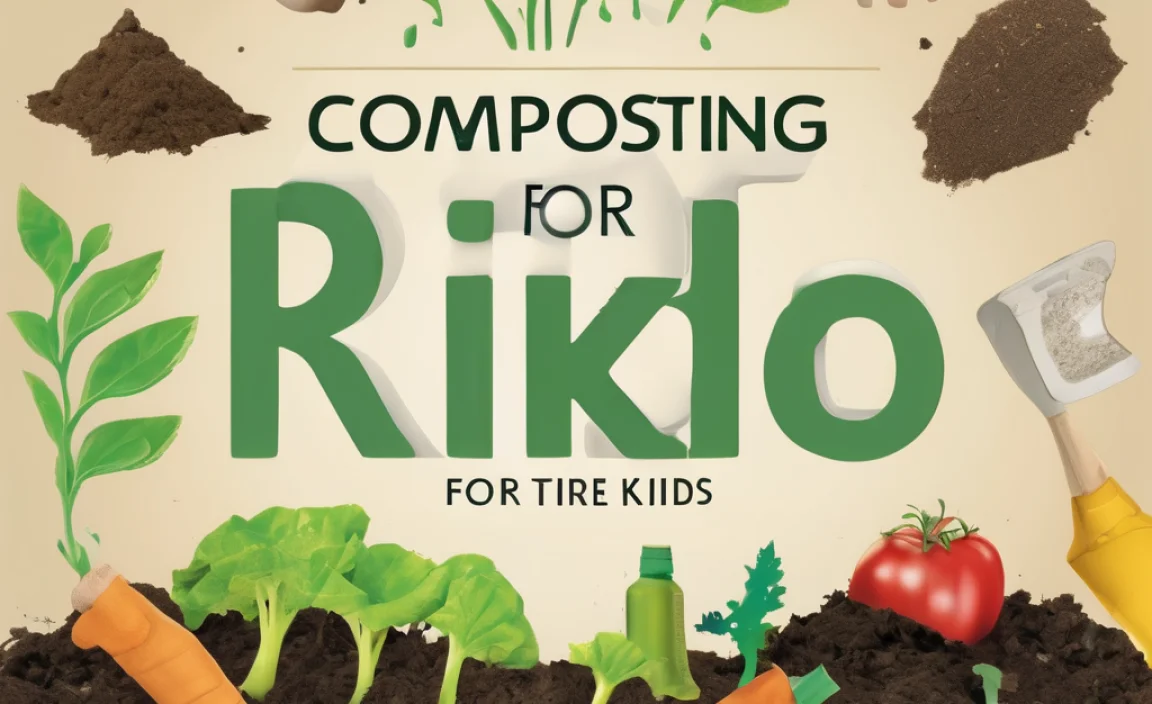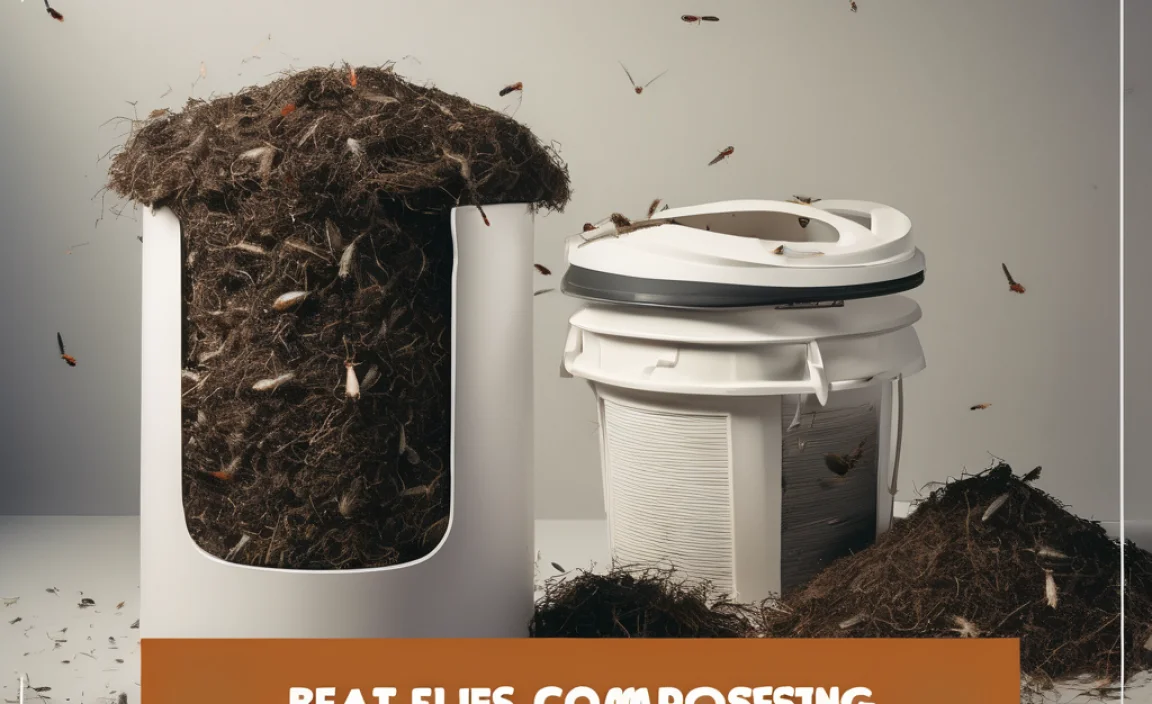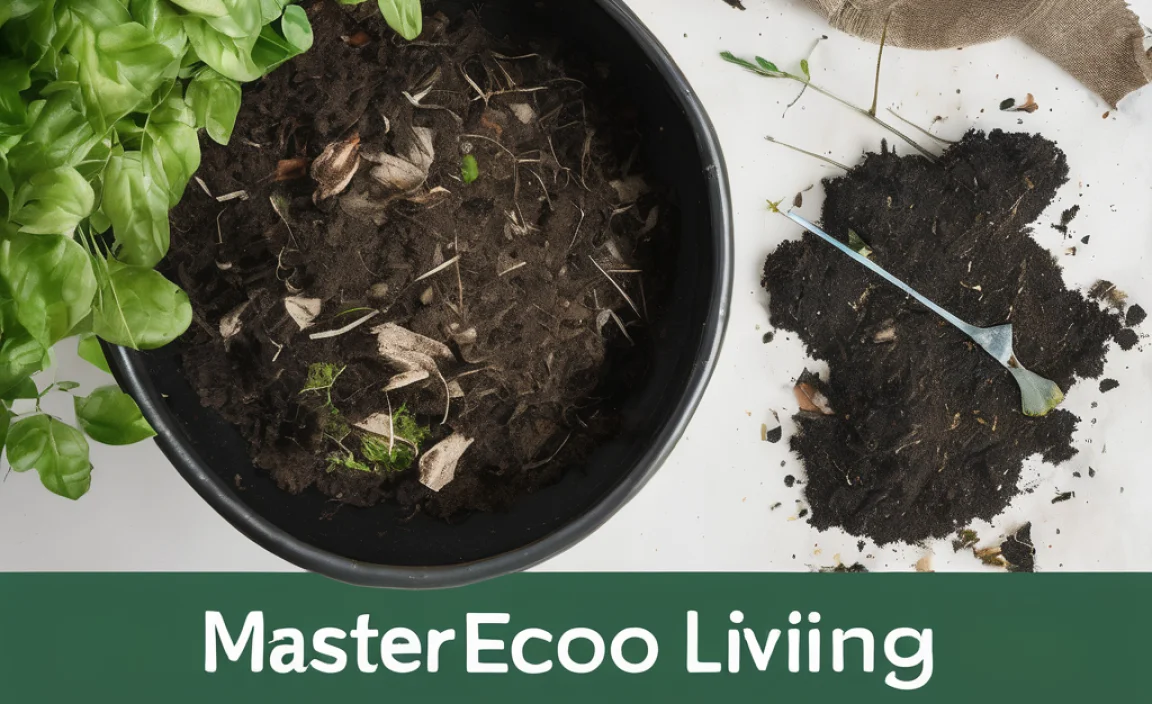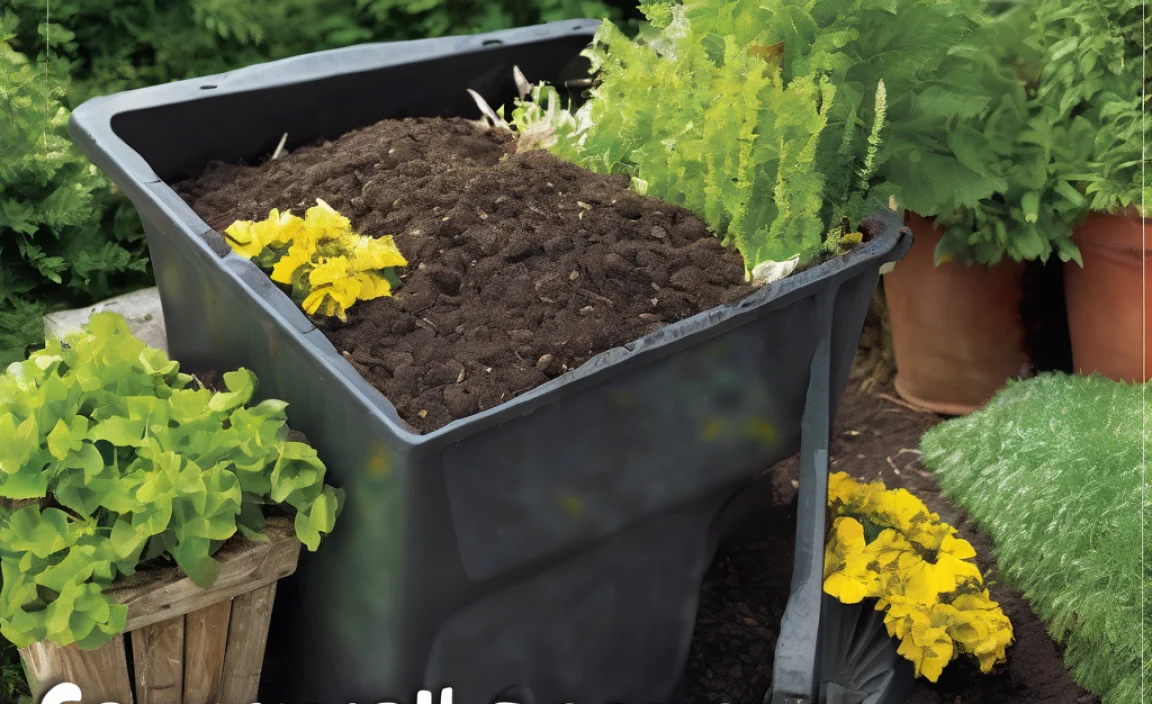Thinking about a compost toilet for your home, RV, or off-grid adventure? It might sound a little tricky at first. But trust me, it’s simpler than you think! We’ll walk through everything you need to know, step by step. You’ll be composting like a pro before you know it. Let’s get started and tackle this together!
Compost Toilet Step By Step: Your Essential Guide
Hey there, DIYers and eco-conscious folks! Troy D Harn here, your friendly guide from TopChooser. Today, we’re diving into the world of compost toilets. Maybe you’ve heard the buzz, or perhaps you’re looking for a more sustainable bathroom solution that doesn’t involve a traditional septic system or sewer hookup. Whatever your reason, a compost toilet is a fantastic option. It’s not as daunting as it sounds, and with this guide, you’ll have a clear roadmap to understanding, setting up, and maintaining your own compost toilet.
We’ll break down everything from what a compost toilet actually is, to the different types, how to set one up, and most importantly, how to manage the composting process itself. We’re aiming for clear, simple steps so you feel totally confident. Let’s get to it!
What Exactly is a Compost Toilet?
A compost toilet is a waterless or low-water toilet that treats human waste (feces and urine) through the process of composting. Instead of flushing waste away with gallons of water, these systems use natural biological processes to break down solid waste into a safe, soil-like material. They are a great solution for areas with limited water access, off-grid living, or for anyone wanting to reduce their environmental footprint.
The key is managing the moisture and carbon-rich materials (like sawdust or peat moss) to create the ideal environment for decomposition. It’s a natural cycle, much like composting your kitchen scraps, but designed specifically for human waste.
Why Choose a Compost Toilet? The Benefits
Before we jump into the how-to, let’s look at why so many people are making the switch. The advantages are pretty compelling:
- Water Conservation: This is a huge one. Traditional toilets use a lot of water. Compost toilets use little to no water, which is a lifesaver in dry climates or for extreme eco-efficiency.
- Environmental Friendliness: By treating waste on-site and turning it into a nutrient-rich compost, you’re closing the loop and reducing pollution that can enter water systems.
- No Septic System Needed: If you live in an area where installing a septic tank is difficult or expensive, a compost toilet is a viable alternative.
- Nutrient Recycling: The end product can be a valuable soil amendment, returning nutrients to the earth after proper composting.
- Reduced Odor: When managed correctly, modern compost toilets are designed to minimize or eliminate odors.
- Cost Savings: Over time, you save money on water bills and the potential costs associated with septic system maintenance or installation.
Types of Compost Toilets
Not all compost toilets are created equal. They generally fall into a few main categories, each with its own way of handling waste and composting:
1. Self-Contained Compost Toilets
These are the most basic and often the most affordable. They are essentially a toilet structure with a built-in composting chamber. All the waste stays within the unit. You’ll typically add a bulking material (like sawdust) after each use. When the chamber is full, you remove the compost and let it finish composting in a secondary container.
2. Remote or Central Composting Toilets
These systems separate the toilet fixture from the main composting process. Waste travels through a pipe to a larger, external composting container or system. This is often a more advanced setup, sometimes seen in larger homes or small communities, and typically requires more dedicated space for the composting process.
3. Batch Composting Toilets
These are a type of self-contained toilet. You use the toilet until a chamber is full, and then you seal that chamber off to allow it to compost while you start using a second, empty chamber. Once the first chamber has finished composting, it can be emptied. This is a less common but effective method for continuous use.
4. Evaporation/UDDT (Urine-Diverting Dry Toilet)
These types of toilets are very popular and often what people mean when they talk about modern compost toilets. They specifically separate urine from solid waste. This is a game-changer for odor control and composting efficiency. The urine can be diverted for dilution and use as fertilizer, or treated separately. The solid waste goes into a compost chamber, where it’s mixed with carbon material. Because urine is diverted, the solid waste has less moisture, which helps with decomposition and reduces smells.
For beginners, a self-contained or urine-diverting model is usually the easiest to start with. We’ll focus on the principles that apply to most types, with a nod to the UDDT style as it’s very common.
Step-by-Step Guide to Setting Up Your Compost Toilet
Alright, let’s get down to business! Setting up a compost toilet isn’t rocket science. It requires a bit of planning and some basic DIY skills, but it’s definitely achievable.
Step 1: Choose Your Compost Toilet System
This is the first and most crucial step. Consider:
- Your Needs: How many people will use it? Is it for a tiny house, an RV, a cabin, or a regular home?
- Space: How much room do you have for the toilet itself and for a separate composting area (if needed)?
- Budget: Prices can range from a few hundred dollars for a simple DIY bucket system to several thousand for high-end manufactured units.
- Climate: Colder climates might require more insulation or specific composting management strategies.
- Local Regulations: Always check your local building codes and environmental health regulations regarding composting toilets. Some areas have specific rules about their use and the disposal of the composted material. You can often find this information on your local government’s website, for example, from the U.S. Environmental Protection Agency (EPA) or your state’s environmental department.
For this guide, we’ll assume you’ve chosen a popular UDDT (Urine-Diverting Dry Toilet) system, as they offer excellent performance. Many excellent brands are available, or you can even build your own!
Step 2: Prepare the Location
Find a suitable spot for your toilet. It needs to be:
- Accessible: Easy to get to, of course!
- Ventilated: Good airflow is important for odor control and the composting process. Most compost toilets come with a vent pipe system.
- Stable: The floor needs to be level and strong enough to support the toilet, especially if it will be plumbed for urine diversion.
- Near a Power Source (if electric): Some models use a small fan for ventilation, which requires electricity.
Most compost toilets are designed to be installed much like a standard toilet, often replacing an existing one. Follow the manufacturer’s instructions for your specific model.
Step 3: Install the Toilet Fixture
This is where things get a bit more hands-on. Follow your manufacturer’s detailed installation manual. However, here are general steps for a UDDT:
- Secure the Base: Mount the toilet base to the floor if required.
- Connect the Vent Pipe: Install the exhaust vent pipe according to the instructions. This pipe should run from the toilet unit up through a wall or roof to the outside. Ensure it’s sealed properly to prevent leaks and drafts. A good vent fan, often powered by a small solar panel or battery, helps draw air through the system, further reducing odors and aiding drying. The EPA provides general guidance on ventilation systems that can be adapted to various situations.
- Set Up Urine Diversion: This is critical for UDDTs. The urine separator is built into the bowl. You’ll need to connect a hose or pipe from the urine outlet to wherever you plan to collect or divert the urine. This might be a separate holding tank, a direct connection to a greywater system (check local codes first!), or a subsurface irrigation system if permitted and appropriate.
- Add Initial Bulking Material: Many systems recommend adding a layer of dry, carbon-rich material (like peat moss, coco coir, or fine sawdust) to the solid waste container before first use. This helps absorb moisture and kickstart the composting process.
Safety Tip: If you’re drilling holes through walls or roofs for ventilation, make sure you know what’s behind them (electrical wires, plumbing, etc.) and take appropriate safety precautions.
Step 4: Prepare Your Composting Area/Container
This is for the solid waste. Depending on your toilet model, this might be an internal bin, a separate external tank, or a simple bucket.
- For Self-Contained Units: You’ll have a chamber directly beneath the solids opening.
- For UDDTs: The solids usually drop into a removable bin or bucket within the unit, or into a larger holding tank connected to the unit.
The goal is to have a place where the solids can collect, mix with bulking material, and eventually compost. For many UDDTs, you’ll add about a cup of bulking material after each solid waste use. Some systems have a crank or handle to mix the material, while others rely on your additions and the natural movement of waste.
Managing Your Compost Toilet: The Day-to-Day
Now that your toilet is set up, let’s talk about keeping it running smoothly and hygienically. This is where the “composting” really comes into play.
1. Using the Toilet (Solids)
- Add Bulking Material: After every time you use the toilet for solid waste, add a covering of your chosen bulking material. This is crucial! It helps absorb moisture, reduces odors, and provides the carbon needed for composting.
Good Options: Coconut coir (coco coir), peat moss, finely ground sawdust (from untreated wood like pine or fir), or a commercial compost starter.
What to Avoid: Treated wood sawdust, very fine dust (can become airborne), or materials that won’t break down easily. - Mix if Necessary: Some systems have a built-in agitator (a crank or lever) to mix the solids with the bulking material. If yours doesn’t, give it a gentle stir with a small trowel or stick after adding the bulking material, especially if you’re not diverting liquids.
2. Managing Urine
If you have a urine-diverting toilet:
- Regular Emptying: Urine is mostly water, but it can build up. Empty the collection container or tank regularly.
- Dilution for Fertilizer: Undiluted urine is quite potent. It can be a great fertilizer, but it needs to be diluted. A common recommendation is a 10:1 or 20:1 ratio of water to urine. Always research best practices for using urine as fertilizer in your area. Some people use it for ornamental plants but are cautious with food crops.
- Odor Control: While UDDTs are great for odor, if you notice any, ensure the urine diverter is clean and unobstructed, and that the vent fan is working.
3. Emptying the Solids Chamber
This is the part people often worry about, but it’s simpler than it sounds when done correctly. The frequency depends on the size of your solids chamber and how many people use the toilet.
- When it’s Full: Once the solids chamber reaches a certain level (check your manual), it’s time to empty it.
- Transfer to Secondary Composting: The material you remove from the toilet is NOT finished compost. It’s the first stage of composting. You need to transfer this material to a dedicated secondary compost pile or bin. This is where the final decomposition and pathogen kill-off happens.
- Secondary Composting: Your secondary compost should be managed like a regular compost pile, but with a bit more care due to its origin.
- Mix with Carbon: Add plenty of carbon-rich materials (leaves, sawdust, straw) to the material you removed from the toilet. Aim for a good brown-to-green ratio.
- Maintain Moisture and Aeration: The pile should be moist like a wrung-out sponge but not soggy. Turn it regularly to introduce oxygen, which speeds up decomposition and helps kill pathogens.
- Time: This secondary composting phase needs time. Depending on management and climate, it can take anywhere from a few months to over a year. A good rule of thumb is to let it compost until it looks and smells like rich, dark soil, and is no longer recognizable as human waste.
4. Maintaining the Vent and Fan
Periodically check that the vent pipe is not blocked by debris, snow, or insects. If you have a fan, ensure it’s running correctly. Clean the fan and vent as needed.
Composting Toilet Management: A Quick Comparison Table
Here’s a simple table to help you visualize the differences in management for different styles:
| Feature | Self-Contained (non-UDDT) | Urine-Diverting Dry Toilet (UDDT) | Batch Toilet |
|---|---|---|---|
| Solids Handling | Collects directly in unit bin. Requires frequent bulking material & mixing. | Collects in separate bin/tank (often removable). Less liquid means faster drying. | Uses alternating chambers; one composts while the other is in use. |
| Urine Handling | Mixed with solids, increasing moisture. Requires active composting management. | Diverted to separate collection. Can be diluted for fertilizer or managed separately. Greatly reduces odor. | Mixed with solids, increasing moisture. |
| Odor Potential | Higher if not managed meticulously due to mixed liquids/solids. | Lowest, due to urine diversion and efficient drying. | Higher if not managed meticulously due to mixed liquids/solids. |
| Composting Stage | Solids/urine mix goes to secondary composting. | Solids go to secondary composting; urine is managed separately. | Solids/urine mix goes to secondary composting. |
| Maintenance Effort | Moderate to High | Low to Moderate | Moderate |
Safety and Hygiene Considerations
It’s completely natural to have questions about hygiene and safety. Responsible management is key.
- Pathogen Kill-Off: The goal of composting is to break down waste and kill harmful pathogens. This is achieved by maintaining the right conditions: heat (generated by microbial activity), moisture, oxygen, and time. A properly managed secondary composting process is essential for safety. Resources from organizations like the U.S. Environmental Protection Agency (EPA) on composting and wastewater treatment can provide robust guidelines.
- Hand Washing: Always have hand-washing facilities (with water and soap or a sanitizing gel) readily available near the compost toilet.
- Materials: Use robust, easy-to-clean materials for your toilet and composting system.
- Personal Protective Equipment (PPE): When emptying the solids chamber or managing the compost pile, wear gloves and consider a dust mask if it’s dusty.
- Finished Compost: The finished compost should be dark, crumbly, and odor-free like good garden soil. Many sources, including university extension offices, offer guidelines on safe composting practices, such as the EPA’s composting resources which often include sections on humanure composting.
Building Your Own Compost Toilet (DIY Option)
For the truly adventurous and budget-conscious, building your own compost toilet is a popular choice, especially for off-grid or tiny home setups. A common and effective DIY design is based on the urine-diverting bucket system.
Basic DIY UDDT Structure
You’ll need:
- A sturdy 5-gallon bucket for the solids.
- A smaller container (like a pint or quart jar or a small bucket) that fits inside the larger bucket for the urine diverter.
- A toilet seat and lid that can be attached to the 5-gallon bucket.
- A hose for the urine drain.
- A larger container or drum for secondary

I am passionate about home engineering. I specialize in designing, installing, and maintaining heating, ventilation, and air conditioning systems. My goal is to help people stay comfortable in their homes all year long.




